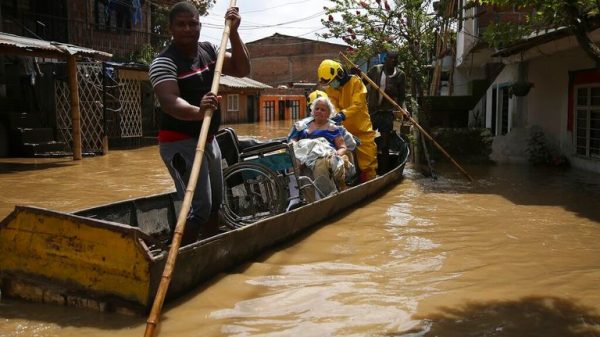A piece of garbage jettisoned from the International Space Station unexpectedly survived a fiery reentry from orbit last month and pierced the roof of a home in Florida, according to NASA.
When the federal agency disposed of a slab of spaceborne refuse weighing about 5,800 pounds (2,630 kilograms), it expected the trash to disintegrate as it plunged into Earth’s atmosphere on March 8.
But a small piece of the cargo roughly the size of a smartphone survived — and it crashed into a home in Naples, Florida, last month, NASA confirmed in an April 15 news release.
The impact event defied NASA’s expectations about what can and cannot survive the reentry process, according to the space agency — and it could have broader implications for future space debris disposal efforts.
A close call and unusual discovery
Otero said he recognized the object as a possible piece of space debris that tore through his roof, he said.
“Something ripped through the house and then made a big hole in the floor and on the ceiling,” Otero, who said he was not home at the time of the incident, explained. “I’m super grateful that nobody got hurt.”
After analyzing the piece of debris at Kennedy Space Center in Florida, NASA confirmed it was indeed a piece of discarded space station cargo, according to a statement released by the agency on Monday.
“The International Space Station will perform a detailed investigation of the jettison and re-entry analysis to determine the cause of the debris survival and to update modeling and analysis, as needed,” NASA said in the statement.
The federal agency did not immediately respond to additional questions about the investigation or whether the agency had changed any plans for future space station trash disposal.
Garbage disposal in space
NASA routinely brings home batches of science experiments, cargo and garbage from the space station using capsules such as the Dragon spacecraft built by SpaceX.
But after the installation of new batteries on the space station in 2021, authorities disposed of a pallet of aging nickel-hydrogen batteries in a different way.
A robotic arm pried the garbage, weighing roughly as much as an SUV, from the space station’s exterior and flung it into Earth’s orbit, according to NASA. The federal agency’s plan hinged on the belief that the discarded batteries, traveling at more than 22 times the speed of sound, would eventually be incinerated as they struck the atmosphere.
The garbage “will orbit Earth between two to four years before burning up harmlessly,” NASA said when the pallet was jettisoned on March 11, 2021.
The European Space Agency, which routinely tracks objects in space that are headed for Earth, said in a March 8 statement, “While some parts may reach the ground, the casualty risk – the likelihood of a person being hit – is very low.
“Large uncertainties, primarily driven by fluctuating levels of atmospheric drag, prevent more precise predictions at this time,” according to the ESA, which is one of NASA’s partners on the orbiting laboratory.
Not the first uncontrolled reentry
To be clear, there are thousands of pieces of uncontrolled junk in space, including discarded rocket parts, defunct satellites, and debris from satellite collisions and weapons tests.
The vast majority of the detritus does fully burn up as it hurdles toward Earth.
However, other massive objects have made an uncontrolled return from space before, including a 22-ton rocket body built in China that in 2022 was discarded in the Pacific Ocean. Pieces of the rocket likely survived, sinking to the bottom of the sea. Members of the international aerospace community, including NASA, widely criticized the China National Space Administration for the move.
But the debris that struck Otero’s house was the result of miscalculations about how space garbage would behave.
NASA already has strong policies in place to prevent objects from colliding in space — or impacting populated areas on Earth, said John Crassidis, a space debris expert and Moog Professor of Innovation at the University at Buffalo’s School of Engineering and Applied Science.
But, in this case, the federal agency’s assumption that the debris it cast aside in 2021 would not pose a threat to people on the ground when it plunged back toward Earth in March was a grave mistake. The space agency should be more conservative in its analysis if it attempts a similar trash disposal method in the future, he added.
“I think this was a good wake-up call to say, ‘Hey we need to do better’ — and the US should not ever have been in a situation where something came down like this and went through a house in Florida,” Crassidis said.



























